|
In the summer of 1972 a Bristol-based organisation, the Pendragon Society, organised an expedition to northern Carmarthenshire in mid Wales, to evaluate the work of a local Welsh historian, Lewis Edwards, who had been writing about arthurian connections in the area since the late 1940s. The Pendragon Society had previously focussed their researches on finding Camelot, and in the mid to late 1960s had initiated excavations at South Cadbury Camp, in Somerset, which was conducted by the respected archæologist, Leslie Allcock.
Led by the inspirational Jess Foster, the excavations in Somerset proved inconclusive as regards definitively locating the site of King Arthur’s legendary capital, Camelot, and so attention was focussed on south-west and mid Wales, where local traditions about Arthur and Merlyn were common in many rural areas. The current name of the town of Carmarthen is an anglicised version of Caerfyrddin (normally translated as “Merlyn’s Fortress”), but this is a matter of contention, as Myrddin (the ‘M’ often changes to ‘F’ in the Welsh language) is the Welsh name for Merlyn, or Merlin as it is often spelt in English writings.
The following year began a series of expeditions, returning to the Pumpsaint area of northern Carmarthenshire, and also to the nearby Preseli mountains northwest of Carmarthen from where the ‘bluestones’ were originally taken to Stonehenge. The Preseli area was regarded in local tradition as the ‘gateway’ to the celtic underworld, “Annwn”, and has many ancient sites that are connected to the arthurian traditions.
The main purpose of these expeditions was to solve the mystery of “Caer Sidi”. Was it a mythical place? Or was it a celestial phenomenon with an earthly counterpart, as was common in many ancient societies from China to the Nazca desert plain of Peru?
|
Pentre Ifan – Preseli
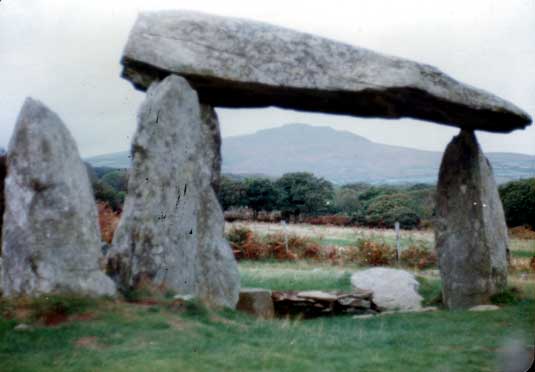
Copyright © John Michael August 1973
|
Over the next few years many of the ancient sites connected to legends of King Arthur were visited in both Carmarthenshire and the Preseli mountains, and the ‘enchanted landscape’ surveyed.
One of the most spectacular sites in Preseli is the cromlech of Pentre Ifan, which is often referred to as a ‘burial chamber’, and is located on the edge of the Preseli mountains, from where ancient megalith-builders took the ‘bluestones’ to use for the inner circle at Stonehenge.
It is probably not a burial chamber, as such, but once the original intentions of the builders were lost in the mists of time, it is quite likely that, as with many similar sites, it may have later been used for the burial of some important local chieftain, or king.
|
“Caer Sidi” is first heard of in the early Welsh poem “Hanes Taliesin”, and there has been much controversy regarding the date of it’s compilation, the authorship of the poem, and the identity of Taliesin himself. Was he a real person or was he a mythological one? Did he live and write in the 13th century A.D. or was it the 6th century A.D.? Opinions differ, often with each comment made, and more confusion has been generated than clarity gained by a host of different enquirers.
The purpose on these pages, in line with the pioneering astro-mythological approach of Owen ‘Morien’ Morgan, is to emphasise the vestiges of astronomical data which many believe had been encoded into the oral traditions of ancient Wales by the Bardo-Druidic poets.
One of the most remarkable books to have appeared in the 20th century was undoubtedly
“The White Goddess” by the celebrated poet Robert Graves. His analysis of ancient Welsh poems, and great efforts to decipher hidden meaning encoded in the poems by the author(s), produced a revealing insight into the world of ancient court bards and wandering minstrels. As well as singing the praises of whichever lord, prince or king whose court(s) offered them shelter and sustenance in exchange for the entertainment of their story-telling, the bards and minstrels also perpetuated oral traditions in poems that contained the ‘ancient bardo-druidic wisdom’ of the Cymric peoples.
These often took the form of ‘riddles’ and were composed according to very strict rules. Probably the most intriguing of these is the “Hanes Taliesin”, and Robert Graves analyses this poem using the translations of both Lady Charlotte Guest and the more controversial translation by D.W. Nash that was published in the “Myvyrian Archæology”. The two translations vary greatly, and their differences fall outside the focus of these pages. But Robert Graves does offer some interesting commentary regarding the astronomical data that he found had been encoded into the poem.
Though it may be said that our focus on these aspects is nothing more than us selecting those bits that fit in with the ancient skywatching theme of the Morien Institute, we take the simple view that with so many astronomical references in the “Hanes Taliesin”, their inclusion must have been intentional on the part of the composer(s), and must therefore have been understood by at least some of those listening to the bards as they told and re-told it in courts throughout the Islands of Prydein (the ancient name of Britain).
If this is so, then “Caer Sidi” must have been of the greatest importance to the peoples of those times, along with “Caer Arianrhod”, “Llys Dôn”, and “Pair Caridwen”. Respectively these are: the ‘ecliptic, or zodiac’ – the apparent path of the sun throughout the natural solar year; the stars of the constellation ‘Corona Borealis’; the stars of the constellation ‘Cassiopeia’; and the mysterious “Cauldron of Ceridwen”. Was this ‘cauldron’ that is referred to in several ancient Welsh folk tales another astronomical reference? And could poems such as the “Hanes Taliesin” contain the vestiges of a body of ancient astronomical knowledge that as been passed down through countless generations in simple, yet encoded, story form, designed only to be understod by those who had been ‘initiated’ into the bardo-druidic mysteries?
Had this knowledge been used to construct the wide variety of megalithic monuments that the celtic tribes encountered upon their arrival in the islands of the Hyperboreans? And did the Welsh druids adopt the ‘natural philosophy’, that Julius Caesar credits them with teaching, from the direct descendants of the megalith builders themselves? Certainly the celtic druids inherited the remnants of a much, much older megalithic science – one that incorporated a highly accurate knowledge of lunar and stellar astronomy in monuments demonstrating a complex geometry that has previously, and erroneously, been attributed to Pythagoras. Caesar was very certain about one thing. Of the druids in both Gaul and the Islands of Britannia he tells us:
“They dispute largely concerning the stars and their motion”.
[1]
Ancient Cymric Star Names
from “Barddas – The Bardo-Druidic System” by AB ITHEL, Welsh MSS. Society, 1862
Welsh Name
|
Translation
|
Celestial Object
|
|
Caer Arianrhod
|
The Circle of Arianrhod
|
Corona Borealis
|
|
Yr Orsedd Wenn
|
The White Throne
|
?
|
|
Telyn Arthur
|
Arthur’s Harp
|
The Lyre
|
|
Caer Gwydion
|
The Circle of Gwydion
|
The Galaxy
|
|
Yr Haeddel fawr
|
The Great Plough-Tail
|
Ursa Major
|
|
Yr Haeddel fach
|
The Small Plough-Tail
|
Ursa Minor
|
|
Y Llong fawr
|
The Great Ship
|
Bootes?
|
|
Y Llong foel
|
The Bald Ship
|
?
|
|
Y Llatheidan
|
The Yard
|
The Orion
|
|
Y Twr Tewdws
|
Theodosius’s Group
|
The Pleiades
|
|
Y Tryfelan
|
The Triangle
|
?
|
|
Llys Dôn
|
The Palace of Dôn
|
Cassiopeia
|
|
Llwyn Blodauwedd
|
The Grove of Blodauwedd
|
?
|
|
Cadair Teyrnon
|
The Chair of Teyrnon
|
?
|
|
Caer Eiddionydd
|
The Circle of Eiddionydd
|
?
|
|
Caer Sidi
|
The Circle of Sidi
|
The Zodiac, or Ecliptic
|
|
Cwlwm Cancaer
|
The Conjunction of 100 Circles
|
?
|
|
Lluest Elmur
|
The Camp of Elmur
|
One of the 3 ‘Monarch Bulls’
|
|
Bwa’r Milwr
|
The Soldier’s Bow
|
?
|
|
Brynn Dinan
|
The Hill of Dynan
|
?
|
|
Nyth yr Eryres
|
The Hen Eagles’s Nest
|
?
|
|
Trosol Bleiddyd
|
Bleiddyd’s Lever
|
?
|
|
Asgell y Gwynt
|
The Wind’s Wing
|
?
|
|
Y Feillionen
|
The Trefoil
|
?
|
|
Pair Caridwen
|
The Cauldron of Ceridwen
|
?
|
|
Dolen Teifi
|
Teivi’s Bend
|
?
|
|
Yr Esgair fawr
|
The Great Limb
|
?
|
|
Yr Esgair fechau
|
The Small Limb
|
?
|
|
Yr Ychen Bannog
|
The Long-Horned Oxen
|
The Twins
|
|
Y Maes Mawr
|
The Great Plain
|
?
|
|
Y fforch wenn
|
The White Fork
|
?
|
|
Y Baedd Coed
|
The Woodland Boar
|
?
|
|
Llywethan
|
The Muscle
|
?
|
|
Yr Hebog
|
The Hawk
|
?
|
|
March Llyr
|
The Horse of Llyr
|
?
|
|
Cadair Elffin
|
Elffin’s Chair
|
?
|
|
Neuadd Olwen
|
Olwen’s Hall
|
?
|
The list above is taken verbatim from “Barddas…”, and other Cymric star names and astronomical terms will be added as we encounter them. Any suggestions as to which stars, constellations or other celestial phenomena are referred to in the list above would be most welcome. Please Contact Us if you know of any other ancient Cymric star names, star-lists or astronomical terms, especially those still in use today. Ancient Welsh star-names, and any stories associated with them that your grandparents might have told you, could well be important pieces of a jig-saw puzzle of oral traditions containing vestiges of the ‘ancient wisdom of the megalith builders passed down through the generations over millennia. What ancient mysteries they may resolve remains to be seen, but they should be gathered and preserved for future generations of astro-mythologists to consider.
But from the perspective of the search for “Caer Sidi”, the list does give an insight into the usage of astronomical terms in the poems of ancient Wales. Owen ‘Morien’ Morgan found much the same in his analysis of the oral traditions of the South Wales valleys, which are steeped in sky lore and contain the accurate observations of ancient skywatchers that are reflected in the place-names where those ancient ‘observations’ were held.
In his analysis of the “Hanes Taliesin”,
Robert Graves comments about the great differences between both translations, and offers his opinion regarding the physical location of Caer Sidi:
“But I learned a good deal from the variants. In place of the ‘land of the Summer Stars’, ‘the land of the Cherubim’ is mentioned. Both mean the same thing. The Eighteenth Psalm (verse 10) makes it clear that the Cherubim are storm-cloud angels; and therefore, for Welshmen, they are resident in the west, from which quarter nine storms out of every ten blow. The Summer Stars are those which lie in the western part of the firmament.
The first two lines in stanza 18, ‘I have been in an uneasy chair above Caer Sidin’ helped me. There is a stone seat at the top of Cader Idris, ‘the chair of Idris’ where, acording to local legend, whoever spends the night is found in the morning either dead, mad, or a poet. The first part if this sentance evidently belongs to the Idris riddle, though Gwion, in his ‘Kerdd am Veib Llyr’ mentions a ‘perfect chair’ in Caer Sidi (Revolving Castle), the Elysian fortress where the Cauldron of Caridwen was housed.”
[2]
What better way to describe the belt of star-groups that comprise the constellations of the zodiac than as a ‘revolving castle’. Certainly observing from the viewpoint of the Earth, any ancient skywatcher untainted by the dry scientific language of the 20th century might well accurately describe the zodiac in such terms. In its daily rotation on its axis the Earth presents each of these constellations to almost every part of the planet in a very consistent order – and therein lies the key to the many mysteries of the ancient world.
Some constellations are only visible at certain seasons for the inhabitants of lands above and below certain latitudes. But throughout the course of the natural solar year, all the constellations of the zodiac belt present themsleves in the same consistent order to all the inhabitants of the Earth, with only the circum-polar stars in each hemisphere never being visible to those living in the higher latitudes of the other hemisphere. In both the daily and the annual cycles of the interaction between the Earth and the Sun, the so-called ‘rising’ and ‘setting’ of the various celestial bodies, be they the sun, moon, planets or groups of stars, is only ‘apparent’. They do not ‘rise’ or ‘set’ at all, and the castle of “Caer Sidi” does not ‘revolve’. One of nature’s simplest optical illusions, there is ample evidence that ancient peoples around the world were very much aware of it.
In the D.W. Nash translation of the “Hanes Taliesin” stanza 18 provides a very definite indication that ancient skywatchers in the islands of the Hyperboreans were aware of this optical illusion regarding the zodiac supposedly ‘revolving’:
“I have been in an uneasy chair
Above Caer Sidin,
And the whirling round without motion
Between three elements.”
[3]
What better words than “whirling round without motion” could be used to poetically describe this fundamental scientific principle of astronomy – that it is the Earth revolving on its axis which gives the illusion of ‘risings’ and ‘settings’ in the daily cycle, and the orbiting of the Earth around the Sun that gives a similar illusion of the ‘revolving’ stars of the zodiac belt (Caer Sidi) in the annual cycle. Throughout the course of the annual cycle the interaction of the Earth with the Sun produces the seasons, and the Earth looks much different in winter than it does in spring, summer and autumn.
For this reason ancient peoples the world over gave a wide variety of seasonally-descriptive names to both the Earth and the Sun – names often associated with the particular star groups that were visible in the night sky at particular seasons. They also paid great attention to comets and meteor storms, which often brought in their wake abrupt and devastating climate changes, disrupting agricultural societies as dust veils in the atmosphere blocked out the light from the sun causing Dark Ages – a time when little vegetation could grow for many years, and survivors of meteoritic bombardments described their terror in legends involving ‘fiery dragons’ and very descriptive tales of ‘celestial battles between the gods’…
Back in the times of the reputed open-air universities of the druids, the ‘hedge schools’, the ancient teachers of astronomy did not have over-head projectors or slide projectors with which to illustrate their courses of instruction. They had the‘live sky’ – the ever-changing backdrop of celestial phenomena, to use not by way of analogy, but to illustrate simply that at particular seasons certain constellations were opposite to the Sun, whilst other constellations formed the individual ‘houses’, or ‘castles’, in which the Sun was regarded as being imprisoned. This ever-changing backdrop of star groups were viewed as ‘directly affecting’ the changes in vegetation and animal behaviours observed at the various seasons.
As Caer Sidi, or Sidin, was “the Elysian fortress where the Cauldron of Caridwen was housed”, and as “Caer Sidi” is the ancient Welsh term for the stars of the zodiac, should we search for the “Cauldron of Caridwen” in the skies? Or did the “Caer Sidi” of the ancient Welsh bards have a ‘physical’ Earthly counterpart? Certainly local West Wales historian, Lewis Edwards, was convinced that it did, and he proposed that it was located in northern Carmarthenshire, centred on the village of Pumpsaint. In 1947 he wrote a paper detailing the results of his researches that two years later became a three-part series of articles in the magazine, “Atlantis Research”. It was entitled “The Welsh Temple of the Zodiac”.
|
|
A Selection Of
Books About
Druids & Celtic Mythology
“A Rattleskull Genius: The Many Faces of Iolo Morganwg”
Geraint H. Jenkins
(Editor)
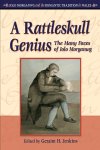
EU English Edition
“Light of Britannia”
Owen Morien Morgan
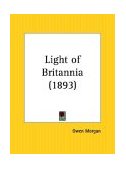
EU English Edition
“The White Goddess”
Robert Graves

EU English Edition
“The Illustrated Golden Bough: A Study in Magic and Religion”
Elizabeth Somer
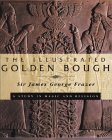
EU English Edition
“Awen: Quest of the Celtic Mysteries”
Mike Harris (Foreword)
Gareth Knight
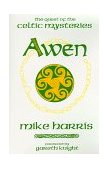
EU English Edition
“The Book of Druidry”
by Ross Nichols & Philip Carr-Gomm (Foreword)

EU English Edition
“Celtic Mysteries: The Ancient Religion”
by John Sharkey
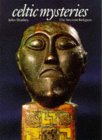
EU English Edition
“Mysterious Britain”

VHS NTSC version
(USA and Canada)
VHS UK PAL version
(UK and Europe)
“The Celts – Boxed Set”

VHS NTSC version
(USA and Canada)
“The Celts – Rich Traditions & Ancient Myths”

VHS NTSC version
(USA and Canada)
“A Rattleskull Genius: The Many Faces of Iolo Morganwg”
Geraint H. Jenkins
(Editor)

EU English Edition
|